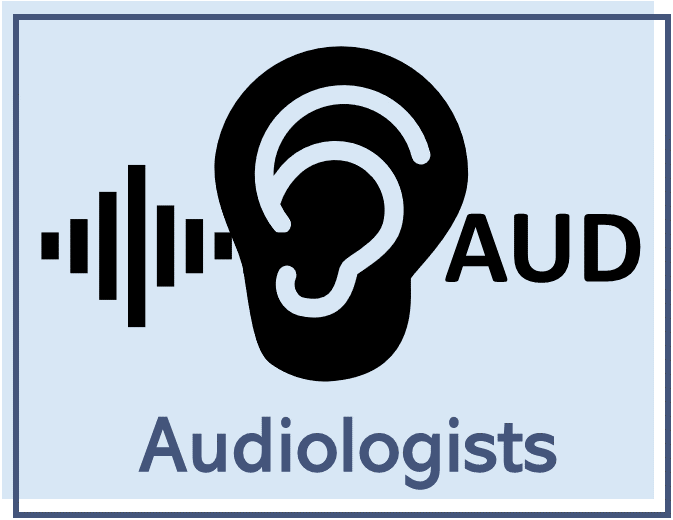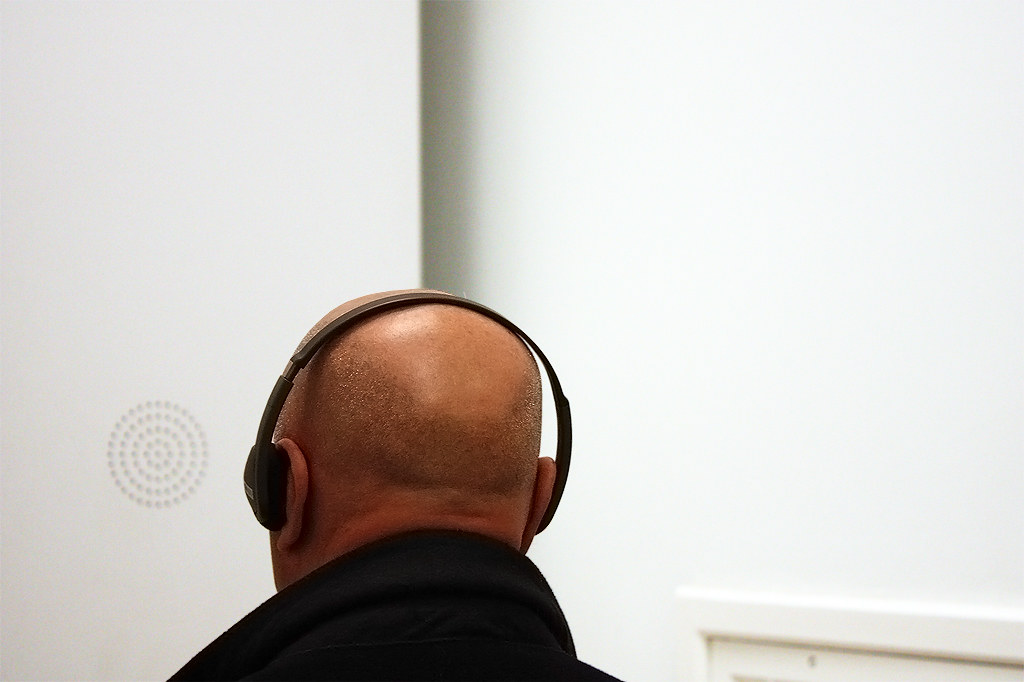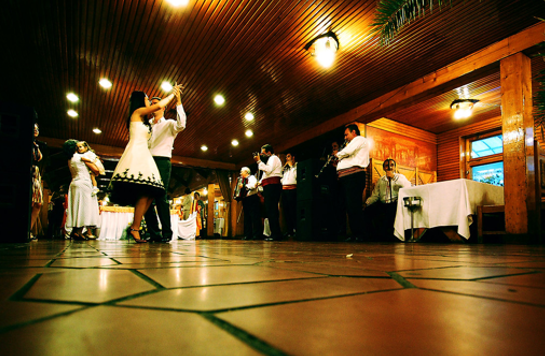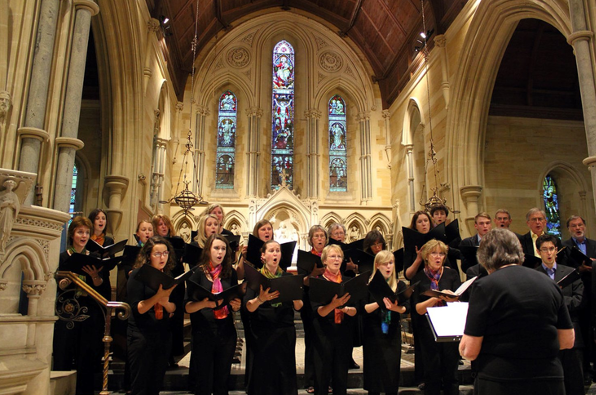See also: Articles on Music, Hearing Loss, and Hearing Devices 
As you read this website, keep in mind the following:
-
People with hearing loss can differ in many ways.
-
Some information may be more applicable.
-
Pick and choose the information most useful for you.
Improving Music Perception and Appraisal of Cochlear Implant Users:
Information for Audiologists



1, 2
Introduction
Music plays an important role in our lives, including people who use cochlear implants (CIs) (Gfeller, 2001). Music offers pleasure, emotional expression, and social and spiritual connections, thus contributing to a higher quality of life (Jayakody et al., 2012). Unfortunately, hearing loss and cochlear implant limitations can negatively affect music experiences. Furthermore, music perception does not typically improve simply from longer implant use (Gfeller et al., 2019).
However, some parts of music perception can improve through training over time (Gfeller, 2016). This includes perception and appraisal of pitch patterns and melodies and timbre. Improved music perception can enhance some aspects of CI users' social lives and well-being (Looi et al., 2012; Gfeller et al., 2002; Petersen et al., 2012; Fu et al., 2015; Vandali et al., 2015).
Topics covered in this page include:
-
Why music-based training is important
-
Music training appraches and types
-
Considerations and reccomendations
-
Resources
Q: Why is music-based training useful for cochlear implant users?
A: Here are a few reasons:
-
Music is a common part of everyday life for many people.
-
Music is part of many social, spiritual, and cultural events, often unavoidable in many situations (Schäfer et al., 2013).
-
Music helps regulate arousal and mood, connects us with memories, and fosters social connectedness (Juslin & Vastfjall, 2008; Schäfer et al., 2013).
-
Music can be an important aspect of well-being and social life (Laukka, 2007).
-
-
Because music is so prevalent, improved music perception can influence:
-
Quality of life (Hutter et al., 2015)
-
Perceived CI benefit (Gfeller, 2016)
-
Participation within society (Gfeller, 2016)
-
-
Skills gained from music training are applicable to cognitive processing of speech:
-
Music engages multiple regions in the brain related to attention, memory, motor functioning, and emotions.
-
Auditory training helps the brain with neuroplasticity.
-
Listening to music requires a higher perceptual demand than speech; this can help “fine-tune” auditory perception (Herholz & Zatorre, 2012; Ingvalson & Wong, 2013; Gfeller et al., 2015).
-
Some perceptual skills gained from extended music training can generalize to components of speech.
-
Q: What does music-specific training offer that is different from speech training alone?
A: Music differs from speech in several ways and exposes the listener to more diverse and complex sounds.
-
Music has a wider range of frequencies and spectral diversity than speech (Chasin & Russo, 2004; Yitao & Li, 2013).
-
Music has a bigger dynamic range of loudness than speech (Yitao & Li, 2013).
-
Music activates a widespread bilateral network of brain regions (frontal, temporal, parietal, and subcortical) (Gfeller et al., 1999).
-
Greater processing skills are required for music than speech for a listener’s interpretation (Chermak, 2010).
-
Music often includes rapidly changing combinations of musical instruments, melodies, rhythms, and dynamics (Looi, et al., 2012).
-
-
Sound processing strategies are primarily designed for speech and have limited ability for complex sounds such as music (Looi, et al., 2012).
Click here to read more about the complexities of musical elements with CI technology.
Q: Why would music-based training be beneficial for adult CI users?
A: Dr. Ani Patel (2011) has proposed the OPERA hypothesis which explains how music training for CI users benefits the neural encoding of speech by driving plasticity in speech-processing networks:
-
O = The anatomy of brain networks that process acoustic features used in both music and speech overlap significantly (Gfeller et al., 2015).
-
Preliminary correlational evidence relating pitch, melody perception, and speech measures (e.g., prosody, lexical phones, phoneme identification) suggest shared mechanisms through which speech and music are processed (Torppa et al. 2014; Ingvalson and Wong 2013).
-
-
P = Music is a more complex stimulus and it requires more precise processing. Enhanced sensorimotor integration, especially via years of musical practice would benefit speech in noise processing.
-
E = Musical activities provoke strong positive emotions; music that is enjoyable to the individual is inherently rewarding.
-
R = Musical activities involve ample repetition of pitch and rhythm patterns.
-
A = Engaging in music activates neural attention networks.
When conditions of the OPERA hypothesis are met, plasticity creates higher precision than what is needed for ordinary speech (Patel, 2011). This may have the potential to improve not only the music perception and enjoyment but also other auditory processes like speech perception in noise and pitch-based prosody perception. This also implies that training materials should be interesting, have apparent practical benefits, and require a reasonable time commitment in order to promote persistence and attention (Gfeller et al., 2015).
A musician and bilateral cochlear implant user Alex Mansouri shares the story of improving music perception.
Music Training Approaches and Types


It is important to remember that CI users vary greatly in their accuracy and appreciation of music. Brain plasticity contributes to learned enjoyment gained through music training, as well as improved perceptual accuracy (Looi et al., 2012).
-
Individual factors such as motivation and attitudes towards music training are also important to consider.
-
Select musical skills important to the individual, such as song or music instrument recognition.
-
Include previously known tunes and musical instruments.
-
Include a variety of musical styles, including some meaningful to the individual.
-
-
The amount of previous formal music training (e.g. music lessons, singing in a choir) also has an impact.
Q: What are the common focus areas in music-based training for CI recipients?
A: Music training programs that have been researched so far often include perception of pitch, rhythm, timbre, and appreciation or appraisal of music listening.
Because music has many diverse and complex components, training can be broken down into various musical perception and appraisal tasks. Rhythm is usually well-perceived by CI users (similar perception as normal hearing adults), so training may focus more on pitch and timbre.
Q: What are the common approaches to music-based training for CI recipients?
A: The two general approaches adopted from auditory training literature to music-based training include analytic and synthetic (Fu & Galvin, 2007; Moore & Amitay, 2007; Looi, Gfeller & Driscoll, 2012; Gfeller et al., 2015). Both approaches can be beneficial, depending upon the listening circumstances, auditory stimuli, listener capabilities (Fu & Galvin, 2007), and hearing history, and age (Moore & Amitay, 2007; Looi et al., 2014; Gfeller et al., 2015).
-
Task difficulty of music training can be adapted by using adaptive or fixed level algorithms.
-
Adaptive training: begins with stimuli that are easily discriminable and the task difficulty is adjusted based on the responses.
-
Fixed-level training: can maintain the same difficulty level (i.e., there is no change in difficulty level regardless of the response) or use stimuli that maintain a constant difference in difficulty.
-
Analytic training
-
Definition: involves bottom-up perceptual processes and focuses on the context-free music signal (Fu & Galvin, 2007). This type of training is designed to provide practice in discriminating targeted stimuli (e.g., small changes in pitch or in timbre), which aids in processing skills (Looi et al., 2012). Examples include contrasting acoustic features with differing pitches, timbre (cello versus piano versus drum), etc.
-
Samples: more isolated, shorter fragments of timbre or melodic contours than samples in synthetic training; may not have much musical context or sound realistic (e.g., MIDI-created tones of an acoustic piano, saxophone, or trombone) (Gfeller et al., 2015)
-
Tasks: usually presented using a closed-set format. The listener's task is to listen for salient acoustic cues and indicate which of the contrasting acoustic features was presented as the stimulus
-
Task difficulty: often presented using an adaptive algorithm, or in fixed but gradually increasing levels of difficulty based on the listener's responses (Looi et al., 2012)
-
Goal: to increase perceptual efficiency in hearing small changes and to facilitate more efficient processing throughout the auditory system which may apply to tasks reliant upon similar processing skills (Fu & Galvin, 2007; Moore & Amitay, 2007)
-
Affect: can be most beneficial when listeners are in optimal listening environments with good stimuli (e.g., listening to a rhythmic component of music in a quiet listening environment)
Synthetic training
-
Definition: involves top-down cognitive processes, where the trainees "fill in the gaps" in the musical information provided by their hearing devices. This type of training is designed to assist the listener to utilize contextual or non-auditory cues in order to promote more efficient cognitive processing (e.g., enhanced attention, use of contextual cues, priming)
-
Samples: more 'connected' and more naturalistic sounds than the samples in analytic trainings; can be made up of either computer-based generated stimuli (e.g., MIDI-created melodies) or excerpts from real-world music (Looi et al., 2012; Gfeller et al., 2015)
-
Tasks: attend to specific auditory features (e.g., listening to sung lyrics against background accompaniment) and extract sufficient usable information from the stimuli by utilizing contextual or non-auditory cues (e.g., musical memory associated with the stimuli) (Looi et al., 2012)
-
Goal: to promote efficient cognitive processing (e.g., enhancing attention and using contextual cues)
-
Affect: can be most beneficial when listeners need to compensate in suboptimal listening conditions, or when the acoustic signal is of poor quality (e.g., sung lyrics partially masked by background accompaniment, or coarse representation of pitch)
Note: training often incorporates a combination of both analytic and synthetic approaches because they help with different aspects of music listening
Considerations and Recommendations
Q: What are other important considerations when it comes to music-based training for adult CI recipients?
A: Below is a list of factors that can possibly affect the rate of learning and rehabilitative benefits of music-based training:
-
Frequency and availability of feedback: repeated exposure to stimuli with feedback shows greater improvement without feedback (Driscoll et al., 2009). Thus, trainees should receive general feedback on their progress, as well as trial-by-trial feedback when possible (Boothroyd, 2010; Driscoll, 2012).
-
Timing: training should be provided early in the rehabilitation process for CI recipients (Philips et al., 2012).
-
Quality: training should be interesting, meaningful, and rewarding enough to ensure sustained participation (Boothroyd, 2010).
-
Diversity: a variety of music to learn the range of target sounds (Boothroyd, 2010) and different difficulty levels should be offered (Driscoll, 2012).
-
Listening task: consider matching the similarity between listening tasks (e.g., stimuli, feedback, response task requirements, etc.) and prior listening experiences, as well as training and testing conditions (i.e., format, layout, interaction, etc.). This will help trainees to apply the learned information from the training session (Driscoll, 2012).
-
Characteristics of trainees: consider individual characteristics such as patients' desire or motivation, engagement, age-related changes, and cognitive factors that can affect the results of the training (Looi & She, 2010; Looi et al., 2012).
-
Physical, cognitive, mental, and social characteristics and changes with the age should be accounted for in the development of music training programs for adult CI users.
-
-
Experiences in music training: experiences in music listening and the knowledge of musical instruments prior to hearing loss can positively affect the training outcome (Driscoll, 2012; Gfeller et al., 2008; Gfeller et al., 2010)
Q: What are some recommendations when counseling adult CI recipients about music listening and participation, as well as music-based training?
Music will not be the same post-implantation, but many people can improve music perception over time with training. Here are practical recommendations for music listening and participation:
-
Develop realistic expectations for patients.
-
Age of implantation (i.e., as a child or adult) may impact expectations regarding the sound quality of music.
-
Some musical experiences may be more enjoyable than others. Ask patients to discover aspects of music that are pleasant to them through trial and error.
-
-
Music perception can improve with practice, but change will likely take repeated exposure to musical sounds.
-
Short rehearsals over the course of several days can result in more progress than fewer lengthy practice sessions.
-
For practice sessions, recommend patients choose times of day they feel most rested and alert.
-
-
Practice music listening in an optimal environment.
-
Recommend patients practice in spaces that have good acoustics.
-
Click here for more information about how the environment affects music listening.
-
-
Begin training by focusing on musical aspects that are most well-perceived through the CI.
-
Suggest patients focus on rhythm during music listening so they can build confidence since it is the most well-perceived. Suggest listening to music with a strong, simple beat.
-
Click here for more information about how different musical sounds affect enjoyment.
-
-
For more rapid success in playing instruments, select instruments that have percussive elements and do not require ongoing tuning.
-
Playing percussive instruments may be beneficial (e.g., drums, xylophones, piano, etc.)
-
Click here for more information for musicians who use cochlear implants.
-
-
Suggest using contextual cues while listening to music.
-
This includes watching the musician, reading notation or song lyrics, or using prior musical knowledge to piece together the sounds.
-
-
Encourage patients to use and adjust to CIs through trial and error.
-
Experiment with different songs, listening environments, and situations to find what is most accessible and enjoyable for the patients.
-
-
Advise patients to spend time listening to previously familiar music.
-
Patients can use past knowledge and their memory of the music to help make sense of the sound.
-
-
Recommend music that is of particular importance and meaning to patients.
-
This can help with application to everyday life. It can also be more motivating for training.
-
This can include simple familiar songs patients are likely to hear in everyday life (e.g. "Happy Birthday," "the Star-Spangled Banner," etc.). They can also choose songs of different musical genres they prefer (e.g. country, classical, and pop music).
-
-
Suggest patients listen to solo excerpts to improve timbre recognition.
-
Listen to solo experts for commonly heard musical instruments (e.g. piano, flute, clarinet, etc.) (Gfeller, 2001; Gfeller, 2012).
-
Resources
Q: Are there computer- or web-based music training programs currently available?
A: Yes. Angel Sound (http://angelsound.tigerspeech.com/) is one of the most extensive and free program available for adult and teen CI recipients. It is a self-based rehabilitation program that allows users to practice and work on their listening skills at home. It includes basic to advanced training modules.
The cochlear implant manufacturers also offer rehabilitation therapy materials. Check out their websites for more information. Keep in mind that not all available training programs are supported by scientific evidence and most of the scientifically developed training has been conducted in laboratories. Thus, developing a rehabilitation program suitable for the individual needs of patients is possible.
Also, click here to view Decision Trees, which illustrate step-by-step problem solving for planning for music listening at home.
If you'd like to see examples of music training tests, visit our music training examples page.
References
Boothroyd, A. (2010). Adapting to changed hearing: the potential role of formal training. Journal of the American Academy of Audiology, 21(9), 601-611.
Chasin, M., & Russo, F. A. (2004). Hearing aids and music. Trends in Amplification, 8(2), 35-47.
Chermak, G. D. (2010). Music and auditory training. The Hearing Journal, 63(4), 58.
Driscoll, V. (2012). The effects of training on recognition of musical instruments by adults with cochlear implants. Seminars in Hearing, 33(04), 410–418.
Driscoll, V. D., Oleson, J., Jiang, D., & Gfeller, K. (2009). Effects of training on recognition of musical instruments presented through cochlear implant simulations. Journal of the American Academy of Audiology, 20(1), 71-82.
Fu, Q. J., & Galvin III, J. J. (2007). Perceptual learning and auditory training in cochlear implant recipients. Trends in Amplification, 11(3), 193-205.
Galvin III, J. J., Fu, Q. J., & Nogaki, G. (2007). Melodic contour identification by cochlear implant listeners. Ear and hearing, 28(3), 302.
Galvin III, J. J., Fu, Q. J., & Shannon, R. V. (2009). Melodic contour identification and music perception by cochlear implant users. Annals of the New York Academy of Sciences, 1169, 518.
Gfeller, K. (2001). Aural rehabilitation of music perception and enjoyment of adult cochlear implant users. JARA, 17-27.
Gfeller, K. (2016). Music as Communication and Training for Children with Cochlear implants. In Pediatric Cochlear Implantation (pp. 313-326). Springer, New York, NY.
Gfeller, K., Witt, S. A., Kim, K. H., Adamek, M., & Coffman, D. (1999). Preliminary report of a computerized music training program for adult cochlear implant recipients. Journal of the Academy of Rehabilitative Audiology, 32, 11-27.
Gfeller, K., Witt, S., Stordahl, J., Mehr, M., & Woodworth, G. (2000). The effects of training on melody recognition and appraisal by adult cochlear implant recipients. Journal of the Academy of Rehabilitative Audiology, 33, 115–138.
Gfeller, K., Turner, C., Mehr, M., Woodworth, G., Fearn, R., Knutson, J. F., ... & Stordahl, J. (2002). Recognition of familiar melodies by adult cochlear implant recipients and normal‐hearing adults. Cochlear implants international, 3(1), 29-53.
Gfeller, K., Oleson, J., Knutson, J. F., Breheny, P., Driscoll, V., & Olszewski, C. (2008). Multivariate predictors of music perception and appraisal by adult cochlear implant users. Journal of the American Academy of Audiology, 19(2), 120-134.
Gfeller, K., Jiang, D., Oleson, J. J., Driscoll, V., & Knutson, J. F. (2010). Temporal stability of music perception and appraisal scores of adult cochlear implant recipients. Journal of the American Academy of Audiology, 21(1), 28-34.
Gfeller, K., Guthe, E., Driscoll, V., & Brown, C. J. (2015). A preliminary report of music-based training for adult cochlear implant users: Rationales and development. Cochlear Implants International, 16(sup3), S22-S31.
Herholz, S. C., & Zatorre, R. J. (2012). Musical training as a framework for brain plasticity: behavior, function, and structure. Neuron, 76(3), 486-502.
Hutter, E., Argstatter, H., Grapp, M., & Plinkert, P. K. (2015). Music therapy as specific and complementary training for adults after cochlear implantation: A pilot study. Cochlear implants international, 16(sup3), S13-S21.
Ingvalson, E. M., & Wong, P. (2013). Training to improve language outcomes in cochlear implant recipients. Frontiers in psychology, 4, 263.
Jayakody, D. M., Looi, V., Lin, E., & Robb, M. (2012, November). The development of a pitch training program for adult cochlear implant and hearing aid users. In Seminars in Hearing (Vol. 33, No. 04, pp. 381-398). Thieme Medical Publishers.
Juslin, P. N., & Vastfjall, D. (2008). Emotional responses to music: The need to consider underlying mechanisms. Behavioral and brain sciences, 31(5), 559.
Kong, Y. Y., Cruz, R., Jones, J. A., & Zeng, F. G. (2004). Music perception with temporal cues in acoustic and electric hearing. Ear and hearing, 25(2), 173-185.
Laukka, P. (2007). Uses of music and psychological well-being among the elderly. Journal of happiness studies, 8(2), 215-241.
Looi, V., Gfeller, K., & Driscoll, V. (2012, November). Music appreciation and training for cochlear implant recipients: a review. In Seminars in hearing (Vol. 33, No. 4, p. 307). NIH Public Access.
Looi, V., & She, J. (2010). Music perception of cochlear implant users: a questionnaire, and its implications for a music training program. International journal of audiology, 49(2), 116-128.
Looi, V., Wong, Y., & Loo, J. H. (2016). The effects of training on music perception and appreciation for cochlear implant recipients. Advances in Otolaryngology, 2016.
Moore, D. R., & Amitay, S. (2007, May). Auditory training: rules and applications. In Seminars in Hearing (Vol. 28, No. 2, p. 99). THIEME MEDICAL PUBLISHERS INC.
Olszewski, C., Gfeller, K., Froman, R., Stordahl, J., & Tomblin, B. (2005). Familiar melody recognition by children and adults using cochlear implants and normal hearing children. Cochlear Implants International, 6(3), 123-140.
Patel, A. D. (2011). Why would musical training benefit the neural encoding of speech? The OPERA hypothesis. Frontiers in psychology, 2, 142.
Petersen, B., Mortensen, M. V., Hansen, M., & Vuust, P. (2012). Singing in the key of life: A study on effects of musical ear training after cochlear implantation. Psychomusicology: Music, Mind, and Brain, 22(2), 134.
Philips, B., Vinck, B., De Vel, E., Maes, L., D’haenens, W., Keppler, H., & Dhooge, I. (2012). Characteristics and determinants of music appreciation in adult CI users. European Archives of Oto-Rhino-Laryngology, 269(3), 813-821.
Schäfer, T., Sedlmeier, P., Städtler, C., & Huron, D. (2013). The psychological functions of music listening. Frontiers in psychology, 4, 511.
Torppa, R., Faulkner, A., Huotilainen, M., Järvikivi, J., Lipsanen, J., Laasonen, M., & Vainio, M. (2014). The perception of prosody and associated auditory cues in early-implanted children: The role of auditory working memory and musical activities. International Journal of Audiology, 53(3), 182-191.
Vandali, A., Sly, D., Cowan, R., & Van Hoesel, R. (2015). Training of cochlear implant users to improve pitch perception in the presence of competing place cues. Ear and Hearing, 36(2), e1-e13.
Yitao, M., & Li, X. (2013). Music and cochlear implants. Journal of Otology, 8(1), 32-38.
Click here to review references used in preparation of this website.
1. All images on this website are used under Creative Commons or other licenses or have been created by the website developers.
2. Click here to access the sources of images on this page.